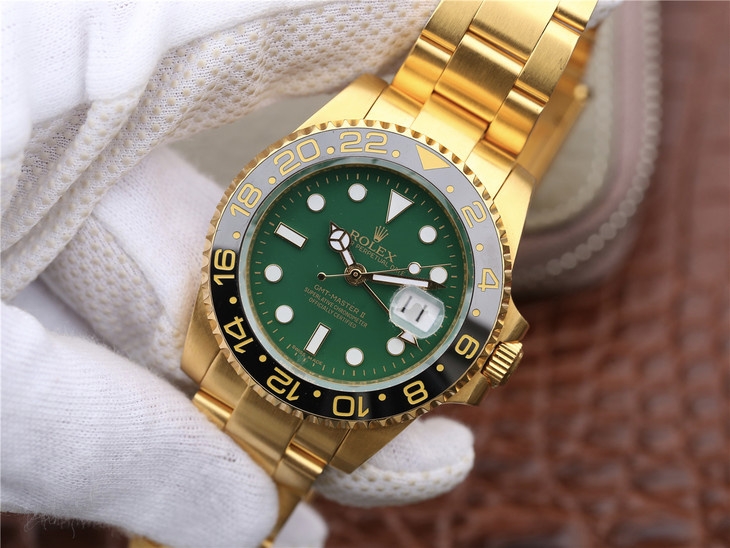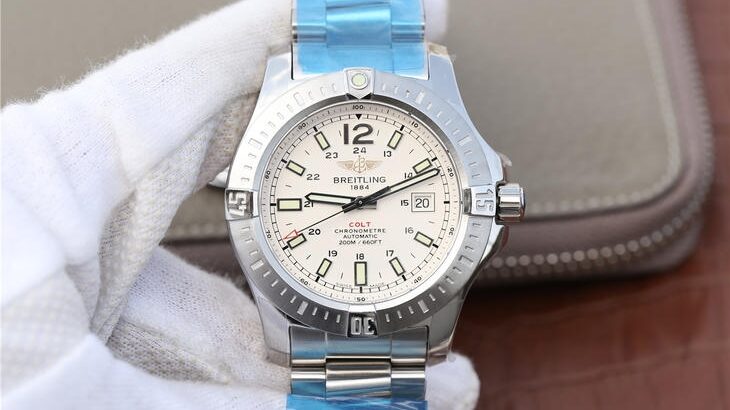The Rolex Submariner is arguably the most recognized luxury watch globally. What started as a practical dive watch in 1953 has evolved into a symbol of prestige. Vintage models are revered, and modern versions are coveted by collectors. Stepping into the world of replica Rolex Submariners can feel overwhelming, but we’re here to break it down.

Rolex, known for incremental changes rather than sweeping innovations, has gradually refined the Submariner while maintaining its essence. Even a time-traveling Hans Wilsdorf (Rolex’s founder) would recognize a modern Submariner, with its iconic black dial, rotating bezel, steel bracelet, and screw-down crown. These elements were present in the original 1953 model and remain today, though there are subtle differences between variations.
Watch enthusiasts love to dive deep into these distinctions, even identifying differences within the same reference numbers – like matte versus glossy dials on the 5513, or the red versus white text on the 1680. But don’t worry, we’re not going to bog you down with every detail. Instead, we’ll provide a broad overview of this iconic watch.
The Origins of the Submariner
Rolex began developing water-resistant replica watches in the 1920s with the introduction of the Oyster case. In 1953, at a time when recreational SCUBA diving was gaining popularity, Rolex launched the Submariner, one of the first dedicated dive watches. With water resistance up to 100m and a rotating bezel, the Submariner set the standard for dive watches.
Over the years, Rolex refined the design, adding crown guards, increasing the case size, and introducing a date version. Today, the Submariner comes in a variety of materials and colors, but the classic steel model remains the most sought after.
The Challenge of Buying a New Submariner
In recent years, purchasing a new Submariner has become increasingly difficult. If you’re not already an established client at a replica Rolex authorized dealer, you may face long wait times or be required to buy other models before you can purchase a Submariner. Rolex produces over one million watches annually, yet demand continues to outstrip supply.
The Pre-Owned and Vintage Market
Fortunately, with so many Submariners produced over the years, there are plenty of pre-owned and vintage models available. However, expect to pay a premium for these watches – often above retail. For those interested in vintage Submariners, it’s essential to do your research and work with trusted dealers like James Lamdin at Analog/Shift or Eric Wind at Wind Vintage. Other reliable sources include Bob’s Watches, HQ Milton, and Tropical Watch.
To better understand the Submariner, here are some important terms and features to know:
Crown Guards: Introduced in 1959, these protect the winding crown.
Gilt Dial: A black dial with gold text, used on early models from the 1950s and 1960s.
Matte Dial: A flat black dial with white text, introduced in the late 1960s.
Glossy Dial: Introduced in the 1980s, these have a shiny finish with white gold surrounds on the indices.
Oyster Bracelet: Rolex’s iconic bracelet, designed for sports watches.
Mercedes Hands: The hour hand features a luminous tip shaped like the Mercedes logo.
Dive Bezel: A rotating bezel for tracking dive times. Initially, the bezel moved in both directions but was later updated to a unidirectional design for safety.
Crown: Rolex’s screw-down crown ensures water resistance. The modern Triplock system, introduced in the 1970s, offers improved sealing.
Movement: Rolex has produced both Chronometer-certified and non-Chronometer-certified Submariners, with all modern models meeting Chronometer standards.
Super Case: Introduced in 2012, this bulkier case design features thicker lugs and crown guards, while still maintaining the traditional 40mm diameter.
Understanding the Evolution
While we won’t delve into every reference variation, understanding the copy Rolex Submariner‘s key milestones gives a sense of its enduring appeal. For those interested in deeper exploration, resources from Gear Patrol, Hodinkee, and Bob’s Watches are excellent starting points.
